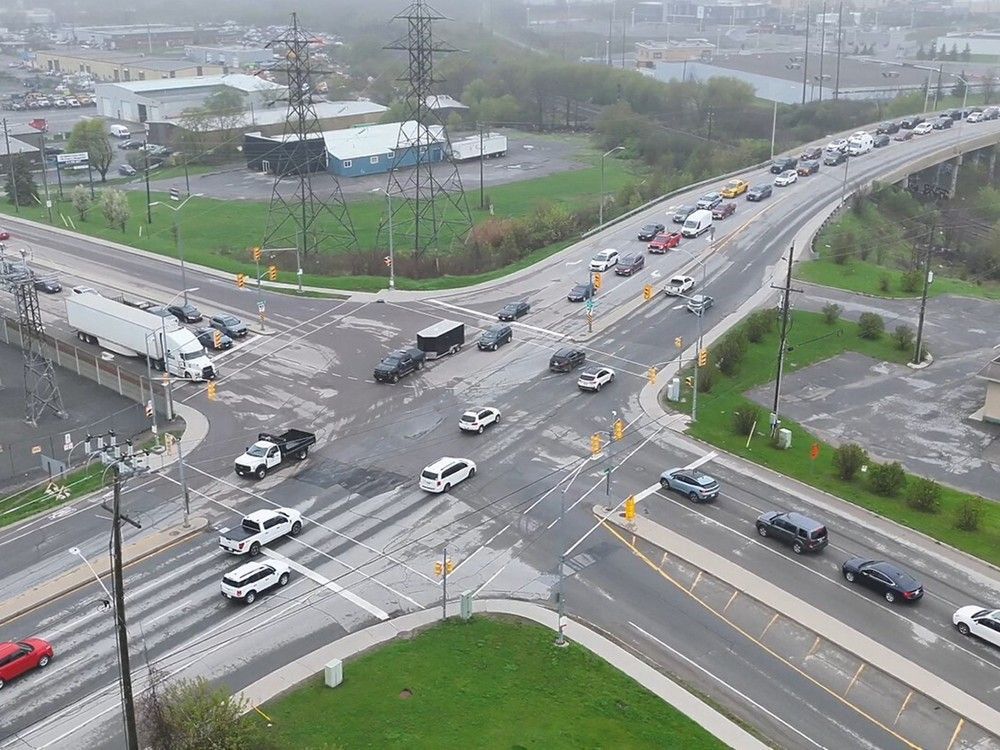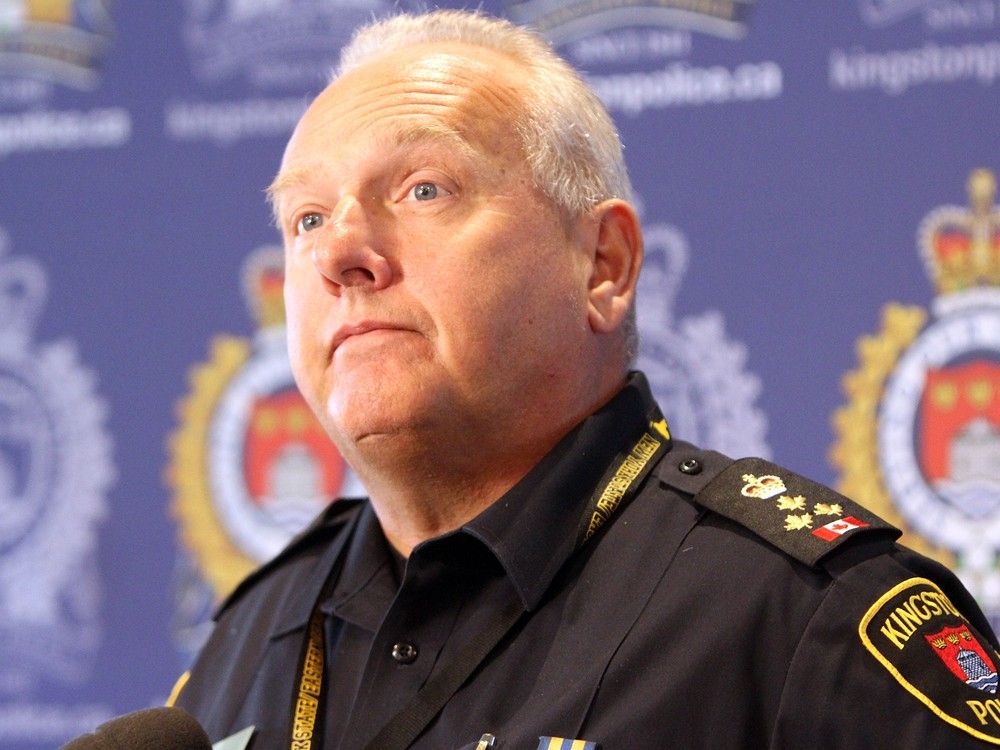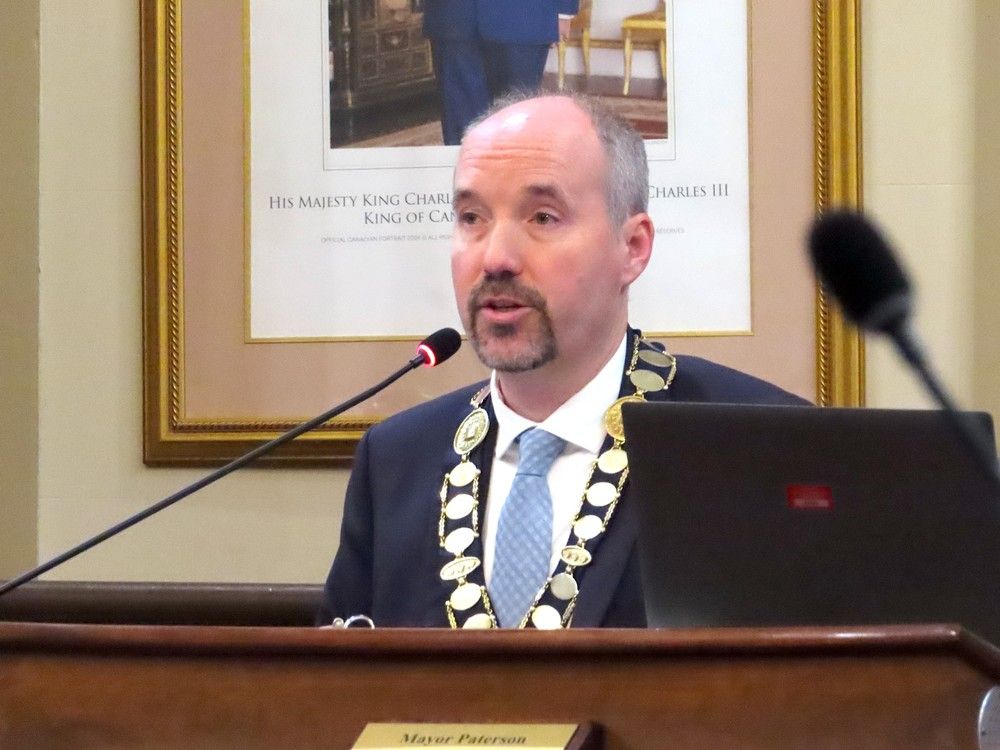
The Canadian Constitution Foundation and Kingston Police are at odds after the force recently used drones to combat distracted drivers.
On May 7, 2025, Kingston Police held a distracted driving blitz in three locations in Kingston.
Those locations included Division Street at John Counter Boulevard, Sir John A. Macdonald Boulevard at John Counter Boulevard, and Hwy. 15 at Gore Road.
Police said following the blitz that its traffic safety unit was given permission from NAV Canada to operate its DJI Matrice 300 drone in the above areas “for the purpose of roadway enforcement.”
According to a news release from Kingston Police “the drone operator would use the zoom camera to record video while looking for cellphone use by drivers at these intersections. Once observed, details and directions of the vehicles and drivers were given over the radio to nearby waiting officers in police cruisers, where they would make an immediate stop and consequently issue an offence notice.”
As a result, 20 people were issued distracted driving tickets.
A first-time ticket for using your cellphone while driving comes with a minimum $615 fine, three demerit points, a three-day driver’s licence suspension, a Service Ontario reinstatement fee of $281 and could have consequences on insurance premiums.
According to the Canadian Constitution Foundation, a national and non-partisan charity that defends the rights and freedoms of Canadians, the method of using drones for surveillance was unconstitutional.
CCF Counsel Josh Dehaas said they were notified about the blitz from a Kingston resident who contacted them, concerned that it was a violation of privacy.
It’s a wrongdoing that Dehaas agrees with.
“It’s very clearly an unreasonable search, therefore a violation of the Charter of right to security against unreasonable searches and seizures, which is Section 8 of the Charter,” Dehaas said.
According to that section of the Charter of Rights and Freedoms, police and other government officials cannot enter your property, search your belongings, or seize your property without a valid legal basis such as a warrant.
“Its purpose is to protect a sphere of individual autonomy where you can live out your private life without the state surveilling you,” Dehaas said.
In the case of Kingston Police, one of the big questions Dehaas raised was whether or not using drones is considered a search.
“You don’t focus on what police are looking for, you focus on what this type of activity is going to attempt to reveal,” Dehaas explained. “Let’s say you have a drone and it’s doing collision reconstruction or it’s looking for a missing person, and it’s at a high altitude, it’s not going to reveal a lot of information about an individual person. But if you have a drone hovering near a car and you’re using that to zoom in and see what people are doing inside that private space inside their car, you’re potentially seeing what’s on the screen of their phone. That is going to reveal a lot more private information than other uses of drones that police have done in the past.”
CCF Counsel Josh Dehaas issued a letter to Kingston’s Police Chief Scott Fraser, on May 14th, informing him of the violation, saying it crosses the line in his opinion.
“It really is about what a reasonable person would expect in terms of how much privacy they’re giving up by driving down the street and they don’t expect drones hovering outside their window. And recording, it goes further than a police officer just standing on the corner which is a well-accepted surveillance technique that police are allowed to do,” Dehaas said.

According to Fraser, the use of drones is nothing new and, in his opinion, isn’t any different than an officer looking at you through their vehicle.
“We ride in buses, we ride in trucks, we ride above other cars to look down and in. The evidence we gather when we are riding beside them and tracking cars is the exact same evidence we get. You can’t see the content of the phone. So I’m not sure where that argument lies,” said Fraser, who added it’s not like they are looking into people’s back yards, it’s about traffic safety.
“We do enforcement with helicopters and airplanes. The evidence from the drone compared to the evidence from the officers that we get on a regular basis when we’re sitting beside a vehicle in a truck, looking down in their driver’s window, you couldn’t tell the difference,” Fraser added.
Fraser received the letter from the CCF and while he believes the use of drones is not infringing on people’s rights, he said everyone has their own opinions.
“We can leverage technology to work to our advantage and if the courts deem it unconstitutional or it’s not right, then at the end of the day we try something, we see if it’s a more efficient manner in providing enforcement and ensuring roadway safety. So, we will evaluate that, as we always do,” Fraser said.
Kingston Police has been using drones since 2018 and are normally brought into service for collision reconstructions, missing persons, fleeing or hiding suspects and large-scale events like Queen’s Homecoming, the solar eclipse and more.
Fraser wondered why this use of technology to make the roads safer is wrong.
“If you go online right now, I can look at Richardson Park, and Breakwater pier through live web cams,” Fraser said. “I’m not sure where the infringement comes. I’m respectful of both sides of the argument and at least we are getting news out of this as well. The whole message is put your phone down. You don’t need to have your phone.”
Fraser said they’ve received both negative and positive feedback regarding the use of drones for the blitz. He said he believes there’s no difference in the evidence.
When it comes to the drones itself, he said, police followed all the rules that are put out by NAV Canada.
“There are rules that come with the drone,” he said. “Where we can fly it, having flight plans and we follow all the rules of flying a drone and we’ve touched a nerve on this one. Obviously, that’s for us to look back and evaluate and assess.”

As for Kingston’s mayor, Bryan Paterson, he applauded the use of technology to help combat distracted drivers.
“It’s something we have been grappling with for a number of years in that we want to provide safer roads and streets,” Paterson said. “We want to make sure that pedestrians and drivers are safe but also recognizing that there is a real strain on police resources with other responsibilities and other sometimes more serious criminal activity taking place.”
Paterson said he believes the use of drones falls under the same category as red light/speeding cameras. Where the difference remains is in the funding and notifying the public.
“When it came to the speed cameras and the red-light cameras, those were very public decisions because they were decisions by the city. They involved investment of city money and so when we made decisions like that it’s in open council. I think with drone activity it’s more of an operation position by police. So, there isn’t necessarily that same level of public discussion or awareness ahead of time,” Paterson added.
For now, Fraser said he’s going to leave it with the experts to determine whether or not it’s infringing on people’s rights and if the courts deem it to be wrong, they will comply.
Until then, their eyes in the sky are just an additional measure to help make the roads safer.
“In this particular case, you’re looking at the hands of drivers to see if there’s a phone in in, that’s it,” said Fraser.
mkulchar@postmedia.com